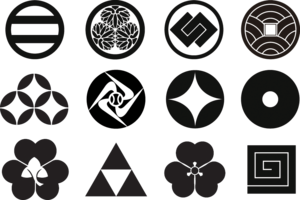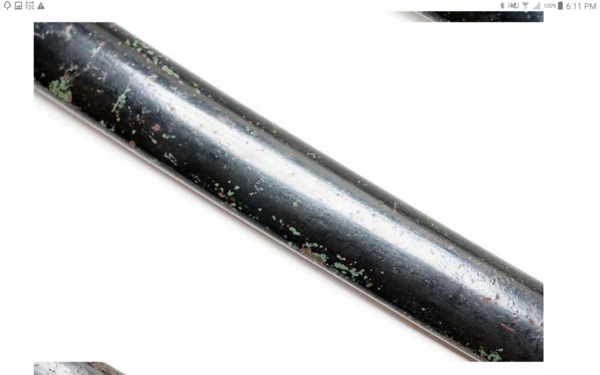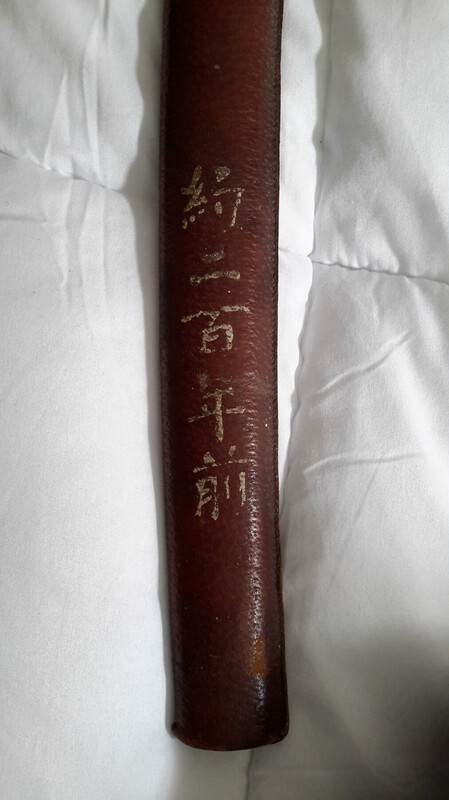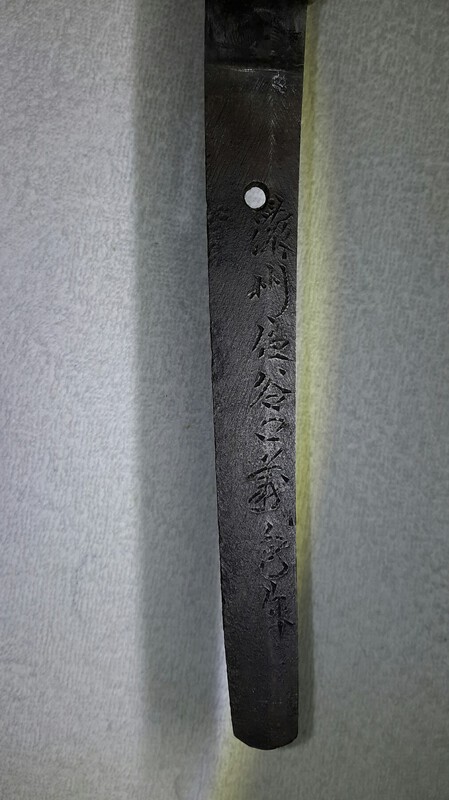-
Posts
1,752 -
Joined
-
Last visited
-
Days Won
11
Everything posted by robinalexander
-
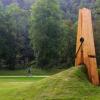
Yamakami Akihisa Late War (Type 3) Gunto
robinalexander replied to MacTheWhopper's topic in Military Swords of Japan
I dont see a problem with members providing their own personal opinion on what they think a value (range or specific) could be. For most, pricing is a big part of collecting and I cant believe one members opinion could be construed as being the 'collective opinion of the Board'. This type of information is particularly helpful for new collectors and members. Having said that, the NMB should not be a general pricing sounding board for commercial gain ...like everything these days (unfortunately), the provision of this 'information or opinion' just needs to be balanced and provided in the good faith by the member on a case by case basis, if they choose to do so. Just my view. Rob -
Hi Volker, For me, this is a very nice complete package and der hamon sehr schon. 👍
-

New Addition to my collection > Thoughts Please??
robinalexander replied to Glenn's topic in Military Swords of Japan
PS....the blade is measured from the tip to the mune-machi which is the small notch in the back of the blade (not the cutting edge) down nearer the tsuka (handle) -

New Addition to my collection > Thoughts Please??
robinalexander replied to Glenn's topic in Military Swords of Japan
Hi Glen, Yep, what John said above. You pics are all very good in terms of subject matter but in order to get some honest opinions from those more knowledgeable, they will definately need to be clearer and maybe larger. Especially, the mei (kanji) on the nakago. Are you sure the blade itself is 85 cms (33.5 inches)? Nice hamon. Rob -
-
-
Hi John, I think Gethin Evans (Menpo) might have one the same as yours. At least, it is very close. He put a number of them up a couple of posts ago on this thread (fantastic collection Gethin). Reproduced shot of Gethin's attached.
-
Thanks John and Jean, this cements my view. I like many others look at Ebay in addition to many other sites and I would just encourage people who strongly believe something to be an obvious fake particularly where it is 'supported' by eaually rediculous and untrue statements, to report it to the business that operates the site. If we all do that then maybe...just maybe ...one day they will listen and do something about it. Rob
-
Thanks Tom and Paul. Dave, leaving others bits out at the moment, in regard to the blade do you think there's anything incorrect with the ... 1. (lack of) lining up of the Ha-machi and Mune-Machi, 2. the exceptionally pointed nakago-jiri 3. the rough file marks on the nakago 4. The strange shape of the Ha- machi 5 and the very 'almost vut not quite 'aged nakago Rob
-
Sorry to post things that may be fake (rather than good stuff) but it makes me really angry when I see sellers describing swords that, some would consider, not genuine. Noticed this sword at.... https://www.ebay.com/itm/384240327437 Now I am far from an expert (no, REALLY far), but there are a number of things I see in this sword that, in my mind, don't equal "antique" "Origin Japan" 'WW2 1939-45' etc. The seller has 100% feedback so that makes me cautious. I have been wrong many times in the past, most recently with a fake 95 (looked genuine 🤔 but clearly accept the concensus ). So do you think its a rip-off low down fraudelent listing or a genuine gunto in all respects? Rob PS ...I have absolutely no desire to purchase it.
-

type 95 nco got a upgrade
robinalexander replied to lonely panet's topic in Military Swords of Japan
-

Is this a good time to sell collections?
robinalexander replied to Peter Bleed's topic in General Nihonto Related Discussion
Spot on Neil ! Rob -
Hi Bruce and David (congratulations, nice package!) I have a similar 'mon' on the habaki of a mumei Wak... possibly Muromachi. I think I can say with some confidence that, in my case, its not their to make the habaki lighter 😁. But seriously, I have done a little reseach and have arrived at mine possibly being Hisamatsu although there are many similar mons the tricky thing is they have varying sized centre holes. Some same as external holes and some much smaller. I dont want to hijack the separate Mon thread but I did notice some similarities with yours when I saw it. Rob
-

Cosmoline for Showato Blade
robinalexander replied to Kaz S's topic in General Nihonto Related Discussion
Hey Kaz, like I said first up..I just dont know why you want to do that. But if you really want to play/experiment then buy something like this and go for your life! But give the real blades (whole blades in any condition regardless) a miss. Rob -

Cosmoline for Showato Blade
robinalexander replied to Kaz S's topic in General Nihonto Related Discussion
Hello Kaz, Not outraged but I just dont know why you want to do that. Are you going to bury it in the backyard because you have to go away fair a couple of years ? Plenty of info on NMB site re 'normal' blade rust protection/prevention measures that will still allow you enjoy your sword over that 2 or 3 year period. Out of interest, could you post a picture or two of your "wooden handle Type 95" "Showato" Rob -
Must agree with Baz Rob
-
Thanks Geraint, both enlightening and interesting. Rob
-
Thankyou Uwe S. and John (I dont know where to start)... Firstly, I appreciate your translation. Secondly, I offer a thousand apologies. Somehow the last picture was in fact, mirror reversed and translating is hard enough without 'little' tech gliches like that (cant believe I did that 😯) Finally, anyone like to have a guess why and when an IJA Officer would have painted that message on a saya? Is it possible it was simply a valued family treasure that they wished to draw attention to in order to protect/preserve in the hands of the allies? Gerainte I love your enquiring mind ...it is a pity there is no post war mystery in terms of reversed kanji BUT.... maybe I wont leave you empty handed entirely. When I acquired the sword (much cosmoline, verdegrease dirt/dust) the inside of the tsuka was being padded out with a torn off piece of newspaper which is dated Thursday, January 17 1946 (pic attached). I have since set this aside and replaced it with a sliver of thin cardboard. But the question in my mind is who put that newspaper in there? The date and 'english newspaper' would suggest a member of the allied forces as hostilities/sword surrenders should have occured well before that..but that would be a strange thing to do I would have thought (why bother?)...leave it with you 🤔 Regards Rob
-
-
Wakizashi with an old blade brought back from New Guinea and in poor shape but gentle preservtion continuing. I Will post more pics etc in Military Swords of Japan soon for interest/comment, but in the mean time, a translation of 'gold' kanji on saya would be great (Nakago is mumei). I believe a cpuple of kanji are numbers but I cant work out entire writing. Thanks Rob P.S. for context, one pic of complete saya to follow....unable to add it in this post (only taken up 4.1 mb ??)
-
Thankyou again Koichi san Yes Curran...I went through Slough's twice as I also 'believed' it was 'Hide' but couldn't match anything else ... then decided to put it to the big guns...i'll keep working on it. Hello Bruce, yes I'm thinking it's a badly hit Showa stamp as its only half there..pic attached.
-
-
Tks Rich, happy to accept your HO. Rob
-

Anyone remember the ol days of fun finds
robinalexander replied to Stephen's topic in General Nihonto Related Discussion
Commiserations to all Aus shooters.... RIP my .22 LR semi-auto Ruger (carbine), 10 round circular and flush mag with 25 curved after market mag. Small Tasco scope. Controlled much of the small introduced vermin and built solid shooting skills for the F88 Austeyr later in life. Now that is a nice personal weapon! Rob -
Hi Steve,, Don't wish to digress from thread but are you saying that, as a general rule, a short signature (say two kanji) for any smith is less likely to be gimei than a longer detailed one? Rob



